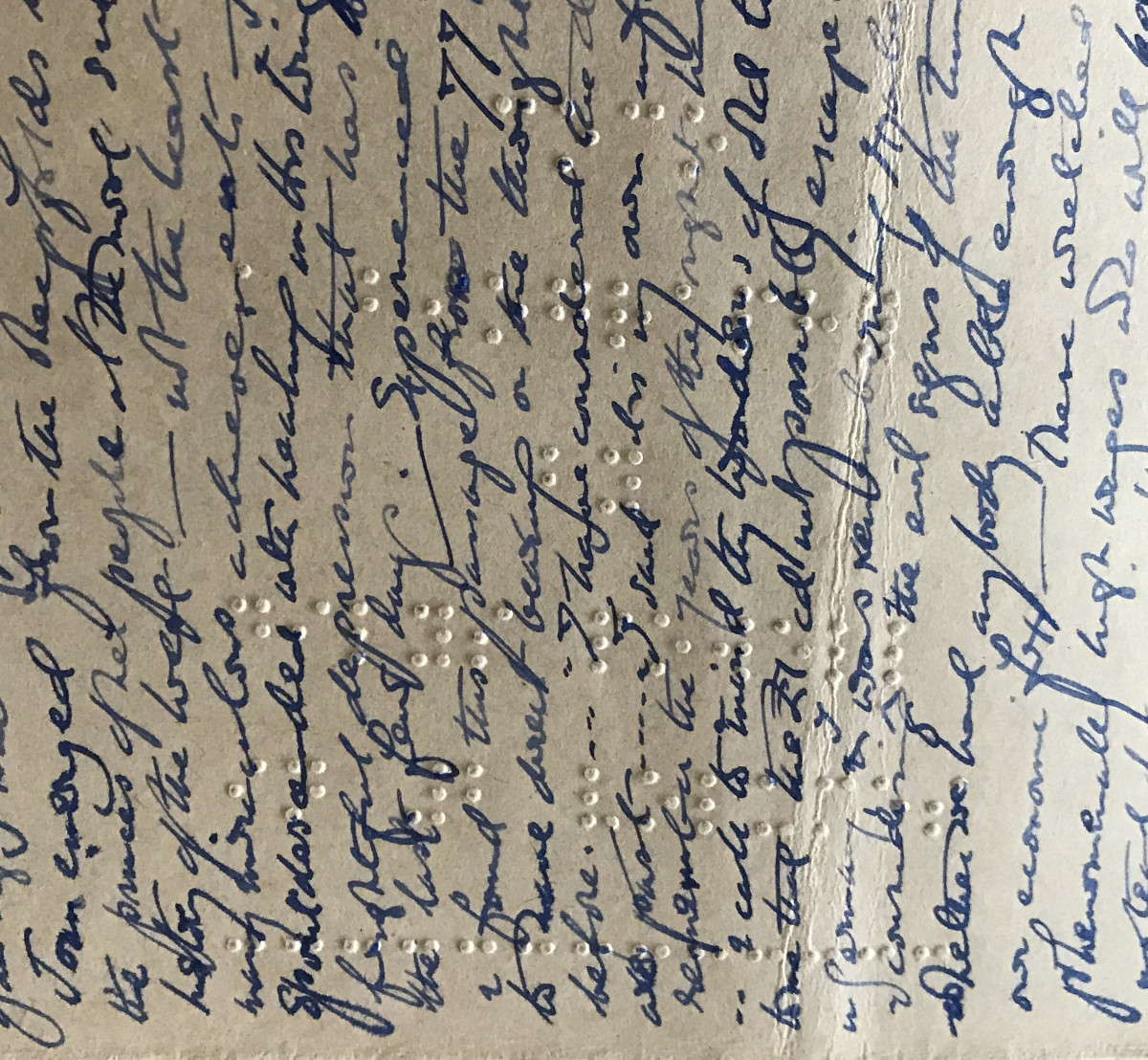World Braille Day is celebrated annually on 4th January to raise awareness of the importance of this communication system which is used by many blind and visually impaired people. This date was chosen as it marks the birthday of the French inventor, Louis Braille (1809-1852). You can find out more about him online. To tie in with this, the highlight examines an example of braille found in the archives.
The Berkshire Record Office holds the diaries of Edith Mellor (1890-1976) [reference: D/EX1959] of Windsor who worked on translating texts into braille for the National Library for the Blind. Both Edith and her sister, Doris Mellor (a well-known conservationist and campaigner) had previously been educated at St Stephen's High School, Windsor, and Edith later gained an MA from the University of Oxford in 1912. Edith’s work on translating braille contributed towards making a wide range of literature accessible to people with vision impairments.
![Diaries of Edith Mellor (1890-1976) [reference: D/EX1959]](/storage/app/media/Highlights/HL%202023/HL%20Feb%202023/cropped-images/D_EX1959_1-0-0-0-0-1675441399.jpg)
Unusually, the diary entries are written on used envelopes, scrap paper, and some braille sheets. They record Edith’s interests in the arts, religion, conservation/heritage, the weather, trips to places of interest, her work translating texts, and the sisters' pet cats.
Braille is a writing system which uses a series of raised dots which can be read by moving a finger along the page. The dots form small 2x3 grids which represent letters and numbers. Contracted braille is used to shorten sentences by abbreviating common lettering or words.
Guidance on how to read braille can be found on the Royal National Institute of Blind People website which includes an alphabet card. Using this alphabet card as a guide, a sentence in braille, found on one of the pages from Edith’s diary, can be read as ‘Coco a biography by Dilys Powell in 2 volumes’.

This is confirmed by a letter from the National Library for the Blind, dated 13 January 1954, which suggests that Edith completed a translation of this book (Edith had used the reverse of this letter to record her diary). The letter reads, ‘many thanks for your letter and volume 2 of “Coco”, which came in safely this morning’. The quality of the dots is then critiqued by the correspondent, Enid Woolner, and it was decided that the machine required repair.

The letter is of particular interest as Woolner goes on to discuss another project Edith is not keen to work on. It reads, ‘if you would rather not do “Daughter of Time”, I can easily send you something else. I mean, if you admire the character of Henry VII, you will hardly want to do a book that devotes itself to proving that he was a villain!’. The Daughter of Time (1951) is a detective novel by Josephine Tey which investigates the alleged crimes of Richard III and suggests that Henry VII may have been responsible for the disappearance of the Princes, Edward and Richard, from the Tower of London. You can find out more about the book online. This letter indicates that translators had some say over which literary works to translate and they could possibly choose something that they would enjoy, or rather that they could reject those that they would not!
It is apparent from her diary, that Edith had a keen interest in history. She refers to reading an ‘excellent article’ in The Times about ‘numismatists & [the] value of coins in [the] study of history’. Her personal interest in history may be why she held strong feelings about the portrayal of historical figures in the novel.
This document is an example of how we can gain an understanding of the record creator, not only from the written text, but also from the materials that are used on which to record it. The contextual information provides us with insight into both Edith herself and her valuable work translating books into braille.
